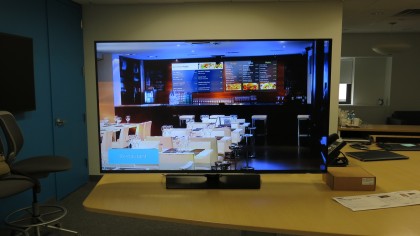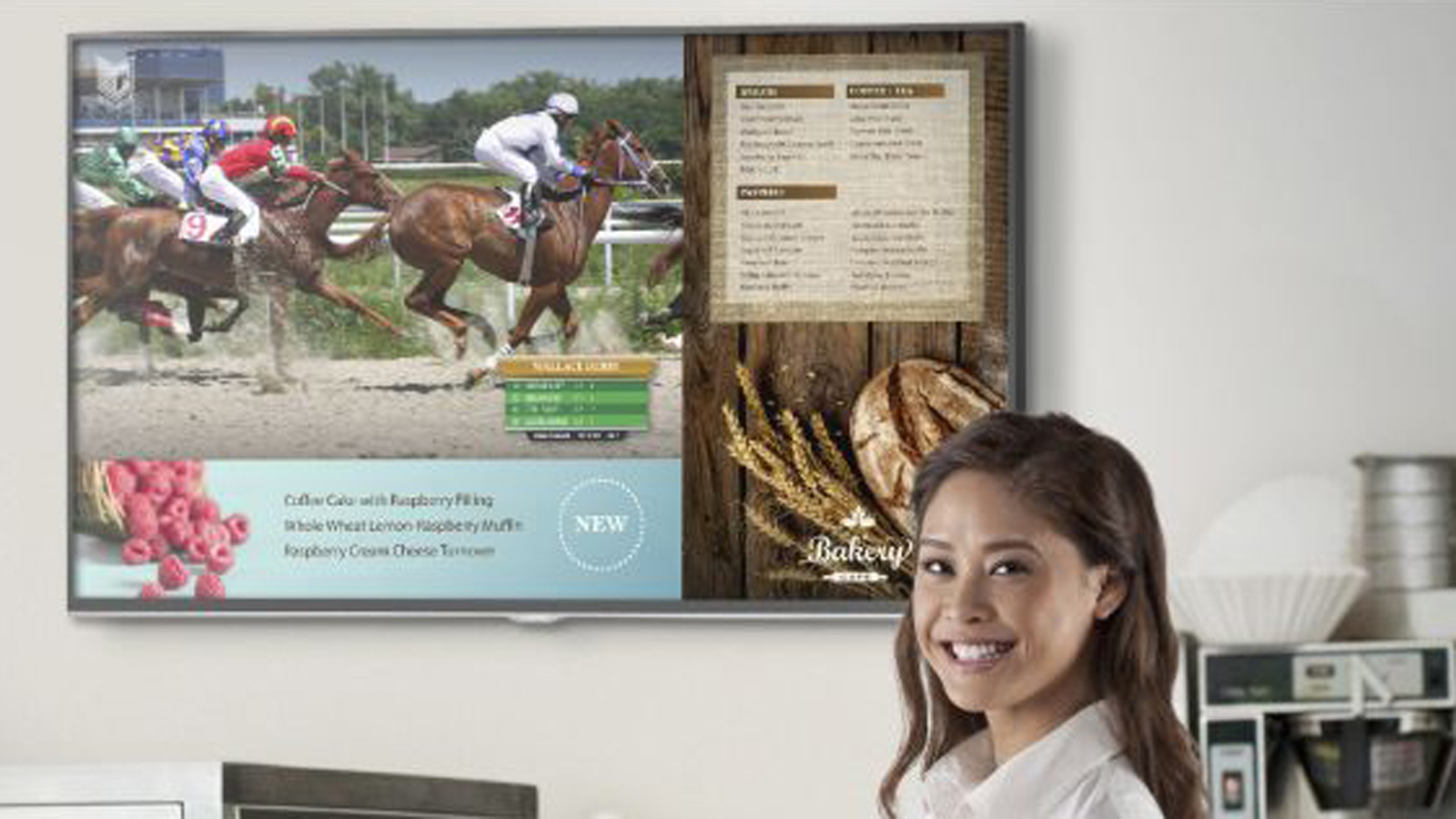Why you can trust TechRadar
Once the SSTV is up and running, you select your preferred language and head to the homepage to start creating content. The software features more than 200 templates organized in professional verticals – everything from dental clinics to cosmetics to delis to apparel.
Once the type of establishment has been chosen and depending on the template selected, you are offered three types of fields where you can upload or input content. These are text fields, video boxes and image boxes.

Users have three options for getting content to the display:
- Publish to the USB provided in the box.
- Via a common Wi-Fi access point.
- Turn the SSTV into its own Wi-Fi access point and push content to the display.
Once the content is uploaded, users can drag and drop the video or images, create text or allow for live TV in the split-screen windows available on that template. The end result is a graphics-oriented, professional looking display. (While there are text-only templates, store owners adding graphics and video to their signage will really make the most of this product.)
One interesting feature that SSTV offers is the ability to schedule different content to display throughout the day. Once the business owner has created a variety of templates, they can select "schedule" from the homepage and set the templates accordingly.
For example, a restaurateur's breakfast template can be set to display from 6 a.m. to 11 a.m. followed by lunch and dinner templates. A bar or restaurant can set the divided screen to feature happy hour specials while showing the game, and then switch to showcase a late night bar menu once happy hour has concluded. The schedule function also allows different templates to be set for every day of the week, offering a great deal of flexibility.
You can even control how long an image appears on screen, which means even a slide show can be tailored to the business's needs. Unlike a personal computer set up to display a PowerPoint slide show, the SSTV allows full control over every aspect of the signage – date, time, length that content is shown, type of content. The SSTV really excels in this regard.
Additional features include preloaded Microsoft fonts to allow for some creativity while creating signage, as well as an image cropping tool that automatically sizes and scales images. There is no video feature available in portrait-mode templates, so users will want to stick to landscape options if they want to watch TV or include a video.
Mobile app
Available in the Google Play and the iTunes Store, the free MagicInfo Mobile app allows users to play content, edit the display schedule, and edit text straight from their mobile device. The app also lets users push content like photos or video to the SSTV. One drawback is that the app only allows users to access existing content, not create it.
This means that you'll have to head to your laptops or tablets in order to have full access to the software platform. In general, however, the app should provide a basic level of service for busy store owners who want control of the TV at their fingertips.
Final verdict
Business owners looking for a static, deli menu-like display will do well to stick with a cheaper, more analog solution. But those looking for a professional-grade signage solution that lets them play TV while showcasing their wares will do well with this commercial product.
The Samsung Smart Signage TV launched just weeks ago as of this writing, so it's still too early to tell if this new TV-signage mash-up will catch on with small business owners. But considering that this display's easy setup offers business owners a quick, intuitive way to create unique signage in less than a day's work, I'd say that's an excellent start.
